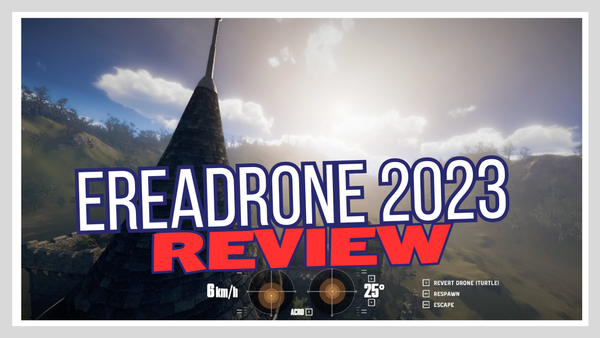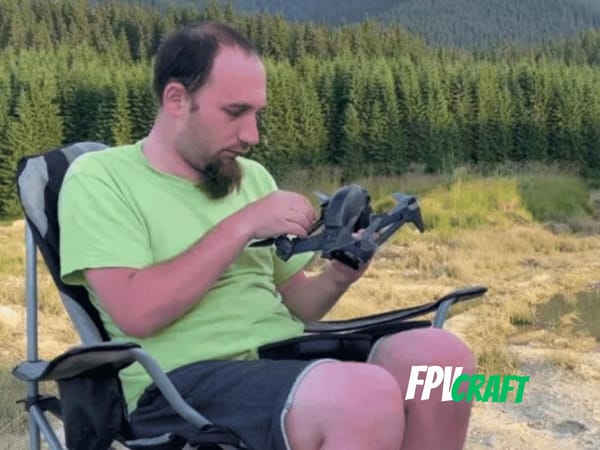What Is the Maximum Service Ceiling of a Consumer Drone?
Flying a drone at higher altitudes may be challenging. Here's what we know about the "drone service ceiling", known as their max flight altitudes.

The place your drone takes off matters a lot because a drone may struggle to fly at high altitudes. But what is the highest service ceiling of a consumer drone?
Most consumer drones have a maximum service ceiling of around 4000m to 5000m (13123ft to 16404ft) above sea level. Few drones can fly beyond that altitude, such as the DJI FPV drone and DJI Mini 3 Pro with 6000m (19685ft), and DJI Inspire 3 with special propellers may fly at 7000m (22965ft) above sea level.
We’ll extend this topic and help you understand the service ceiling, the maximum altitude of a drone to take off, and what different consumer drones have their highest service ceiling.
What is the service ceiling?
In aviation, the service ceiling is the maximum altitude above sea level an aircraft can take off and still sustain a specific climb rate.
Because at higher altitudes is a lower atmospheric pressure, an aircraft, or in our case, a drone, may need a specific amount of thrust to function normally.
The absolute service ceiling is the altitude an aircraft or a drone can fly.
In the case of a drone, the motors produce a specific amount of thrust to take off and fly within normal parameters.
When taking off the drone at a high altitude with lower atmospheric pressure, the drone will not fly nor climb in normal parameters.
A maximum service ceiling of a drone does not mean that the drone cannot fly beyond that altitude; it can, but not within parameters, and the drone may need to exercise extra thrust to function, which will drain the battery quicker and force the drone motors.
The service ceiling of a drone is just an approximation. Some drones may struggle to fly before taking off on the manufacturer’s maximum service ceiling, while others may be able to take off just fine, even beyond the service ceiling noted.
Note: Drones cannot fly at all in a pure vacuum scenario.
Why is it important to know the service ceiling of a consumer drone?
Many hikers and mountain climbers adventuring on high-peak mountains may think of grabbing a drone and capturing unimaginable photographs or footage.
Whilst in most scenarios, you won’t reach the service ceiling of a drone, it is good to remember your own drone service ceiling, just in case.
Also, remember that at high altitudes, the temperature drops a lot below zero degrees, which makes many drones inoperable due to shallow temperatures and even high winds.
» Related: Flying a Drone Near Metal Structures
What is the maximum service ceiling of consumer drones?
Let’s have a look over the most popular and known drones and their maximum service ceiling, shall we?
Please remember the below-mentioned altitudes are not absolute, so you may be able to fly a drone there.
| Drones | Maximum Service Ceiling |
|---|---|
| DJI Mini 3 Pro & DJI Mini 3 | 4000m (13123ft) with the intelligent battery 3000m (9842ft) with the intelligent battery plus |
| DJI Mavic 3 Pro | 6000m (19685ft) |
| DJI Air 2S | 5000m (16404ft) |
| Autel Evo Nano Plus | 4000m (13123ft) |
| DJI FPV | 6000m (19685ft) |
| DJI Avata | 5000m (16404ft) |
| DJI Mini 2 SE | 4000m (13123ft) 2000m (6561ft) with propeller guards |
| DJI Inspire 3 | 3800 (12467ft) with standard propellers 7000m (22965ft) with high-altitude propellers |
| Parrot ANAFI Ai | 5000m (16404ft) |
Why do other types of aircraft have a service ceiling higher than drones?
Drones are small, tiny, flying technological objects and, by far, cannot be compared with other types of aircraft, which have different aerodynamics, combustion systems, and power to push beyond what we consider the absolute service ceiling level of a drone.
A commercial airplane’s maximum flight altitude is about 42000ft or slightly beyond 10000m altitude, which is close to the service ceiling of a commercial aircraft, where many other aircraft can exceed this barrier.
What else do we need to remember when we relate to the service ceiling of a drone?
There are a few factors to remember that can contribute to the maximum service ceiling of a drone and if you want to fly it at higher altitudes.
- The motors: It matters a lot how strong are the drone motors and how much thrust they can produce under normal circumstances. Extra trust may be needed to fly the drone at high altitudes, and if the motors are weak, you won’t be able to fly correctly or at all the drone beyond specific altitudes.
- The drone’s weight is yet another essential factor related directly to the motor strength. Heavier drones may require more powerful motors to fly at high altitudes, and any extra weight (such as a GoPro on top of a drone) may bring down the maximum service ceiling of the drone).
- Propellers: Some drones, such as DJI Inspire 3, have additional special propellers to help fly at higher altitudes.
- Wind speed: At high altitudes, there is a lot of wind, and many drones, particularly lightweight drones, may struggle to fly as usual. In addition, the drone motors need to exercise extra thrust to stabilize the drone, on top of what it needs to fly at high altitudes.
- Low temperatures: Expect at high altitudes to encounter many degrees below freezing temperatures. In many cases, these temperatures may be beyond the normal parameters of a drone to function.
» Related: DJI FPV Drone Long-Term Review




